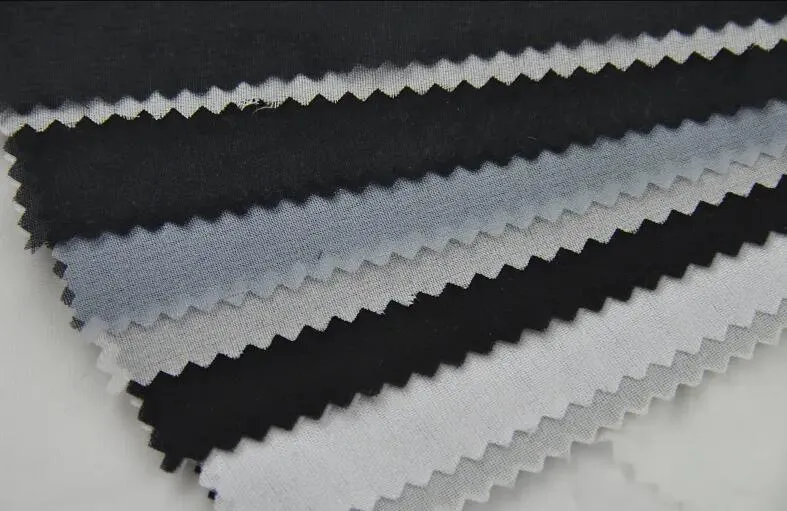Enhancing Every Garment
Soft fabrics Tricot Interlining mainly include knitted fabrics and silk fabrics with loose fabric structure and soft linen fabrics. Soft knitting fabrics often use straight and concise shapes in clothing design to reflect the beautiful curves of the human body; silk, linen and other fabrics are more loose and pleated, showing the flow of fabric lines. Very cool fabric The very cool fabric has clear lines and a sense of volume, which can form a full-fledged clothing outline. Commonly used are cotton cloth, polyester-cotton cloth, corduroy, linen and various medium-thick wool and chemical fiber fabrics, etc. This type of fabric can be used in the design that highlights the accuracy of clothing modeling, such as suits and suits.

Glossy fabrics Glossy fabrics have a smooth surface and can reflect bright light, with a shining feeling. Such fabrics include fabrics with satin texture. It is most commonly used in night gowns or stage costumes to produce a gorgeous and dazzling strong visual effect. Glossy fabrics have a wide range of styles in dress performances, and can have simple designs or more exaggerated styles. Thick and heavy fabrics Thick and heavy fabrics are thick and scratchy, and can produce a stable styling effect, including all kinds of thick woolen fabrics and quilted fabrics. The fabric has a sense of physical expansion, and it is not appropriate to use pleats and accumulations too much. The A and H shapes are the most appropriate in the design. Transparent fabric The transparent fabric is light and transparent, with an elegant and mysterious artistic effect. Including cotton, silk, chemical fiber fabrics, such as georgette, satin silk, chemical fiber lace.
In order to express the transparency of the fabric, the commonly used lines are naturally full, and the H-shaped and round table-shaped design shapes are rich. It is the general term for all kinds of cotton textiles. It is mostly used to make fashion, casual wear, underwear and shirts. Its advantages are easy to keep warm, soft and tight, hygroscopic and breathable. Its disadvantage is that it is easy to shrink and wrinkle, the appearance is not very crisp and beautiful, and it must be ironed frequently when wearing. It is a fabric made of hemp, linen, ramie, jute, sisal, abaca and other hemp fiber. It is generally used to make casual clothes and work clothes. At present, it is also used to make ordinary summer clothes. Its advantages are extremely high strength, moisture absorption, thermal conductivity, and excellent permeability. Its shortcomings are that it is not very comfortable to wear, the appearance is rough and stiff.
It is a general term for various silk fabrics woven from silk as raw materials. Like cotton cloth, it has many varieties and different personalities. It can be used to make all kinds of clothing, especially suitable for making women's clothing. Its strengths are light, thin, fit, soft, smooth, breathable, colorful, shiny, noble and elegant, and comfortable to wear. Its shortcomings are that it is easy to wrinkle, easy to absorb, not strong enough, and fade quickly. Also called wool, it is a general term for fabrics woven from various types of wool and cashmere. It is usually suitable for making formal, high-end clothing such as dresses, suits, coats, etc. Its advantages are anti-wrinkle and wear-resistant, soft hand feeling, elegant and crisp, full of elasticity and strong warmth. Its shortcoming is that washing is more difficult, and it is not suitable for making summer clothes. It is a tanned animal fur fabric. It is mostly used to make fashion and winter clothes. It can also be divided into two categories: one is leather, that is, leather after dehairing treatment. The second is fur, which is treated leather with leather. It has the advantages of lightness, warmth and elegance. Its disadvantage is that it is expensive and requires high storage and care, so it is not suitable for popularization.